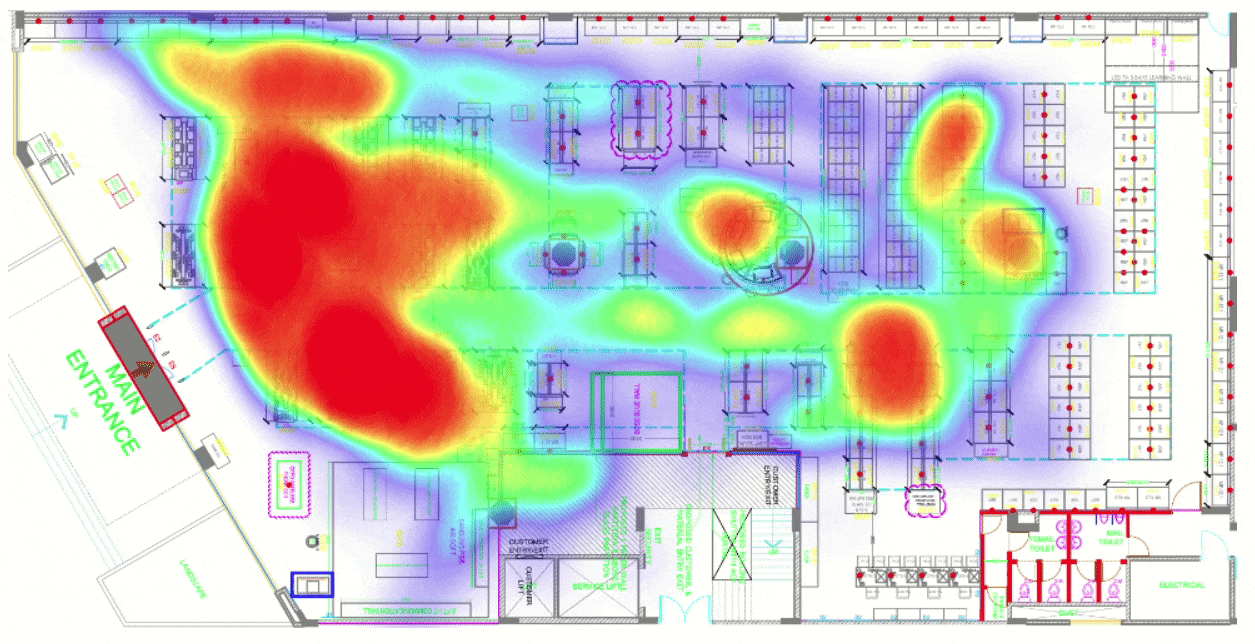In today’s smart building ecosystem, energy-efficient HVAC systems are essential for balancing operational cost savings with indoor comfort. At MVN Engineering, we explore how AI-driven HVAC controls—powered by real-time sensor data—are revolutionizing the way buildings manage heating, ventilation, and air conditioning. The result? Enhanced comfort, lower energy bills, and smarter building performance.
Why AI-Driven HVAC Systems Matter
Traditional HVAC systems operate on fixed schedules or basic motion sensors, often resulting in energy waste and inconsistent comfort. AI-powered HVAC systems offer a more intelligent solution—analyzing live data from cameras, thermal sensors, and occupancy detectors to dynamically adjust HVAC output.
By using artificial intelligence to continuously optimize performance, building managers can:
- Improve HVAC energy efficiency
- Reduce operating costs
- Enhance indoor environmental quality
Real-Time Occupant Monitoring Using Smart Cameras

Advanced camera systems integrated into HVAC automation allow for precise tracking of occupant activity levels, not just presence. These smart sensors can distinguish between different use cases—such as a quiet office versus a high-traffic gym—and adjust airflow and temperature accordingly.
This granular approach to occupancy-based HVAC control prevents energy waste and ensures a consistently comfortable environment across zones.
Equipment Heat Load Monitoring: The Hidden Energy Factor
In any commercial or residential building, electronic devices such as computers, lights, and mechanical equipment contribute to internal heat. Known as equipment gain, this factor is often overlooked in traditional systems.
AI-based HVAC control systems integrate heat sensors and visual data to accurately measure this load, allowing for:
- Smarter temperature regulation
- Reduced system strain
- Lower HVAC energy consumption
Thermal Envelope Monitoring with AI and Infrared Sensors
The thermal envelope of a building—the barrier between interior and exterior—plays a critical role in energy efficiency. AI systems now use thermal imaging and infrared sensors to detect heat loss through windows, walls, and doors in real time.
This data enables:
- Optimized heating and cooling responses
- Real-time zone control
- Prevention of energy leakage
Key Features of AI-Based HVAC Control Systems
AI-powered HVAC platforms offer a suite of intelligent features that support smart building automation:
- Dynamic Zoning: Custom HVAC settings based on real-time occupancy and equipment heat data.
- Predictive Analytics: Forecast future HVAC demand based on usage patterns and environmental trends.
- Data Integration: Aggregation of input from cameras, motion sensors, thermal devices, and environmental sensors.
- Self-Learning Algorithms: Continuous feedback loops allow the system to learn and improve over time.
Proven Energy Savings with Smart HVAC Systems
Multiple real-world applications have shown the success of AI-integrated HVAC systems:
- A commercial office achieved a 20% energy reduction in one year with AI-driven controls.
- A university campus used thermal imaging and occupancy sensors to maintain comfort across multiple zones while cutting HVAC costs.
The Future of Energy-Efficient HVAC Design
As IoT sensors, AI algorithms, and predictive modeling continue to evolve, HVAC systems will become even more adaptive and sustainable. Future advancements will likely include:
- Indoor air quality monitoring
- Humidity and CO₂ level detection
- Weather forecasting integration
Conclusion: Smarter HVAC Starts with Smarter Data
The integration of AI with HVAC systems marks a transformative shift in how modern buildings manage energy, comfort, and operational efficiency. By leveraging real-time data from occupancy sensors, thermal imaging, and equipment monitoring, AI-powered HVAC controls can dynamically respond to changing conditions and optimize performance like never before.
At MVN Engineering, we believe that the future of HVAC lies in adaptive, intelligent systems that prioritize both sustainability and occupant well-being. Whether you’re managing a high-rise commercial tower or a multi-zone facility, embracing AI-driven HVAC solutions is a forward-thinking step toward greener, smarter building operations.
Ready to lead the change?
Connect with our experts today and learn how MVN can help you design and implement energy-optimized HVAC systems powered by the latest AI technologies.





